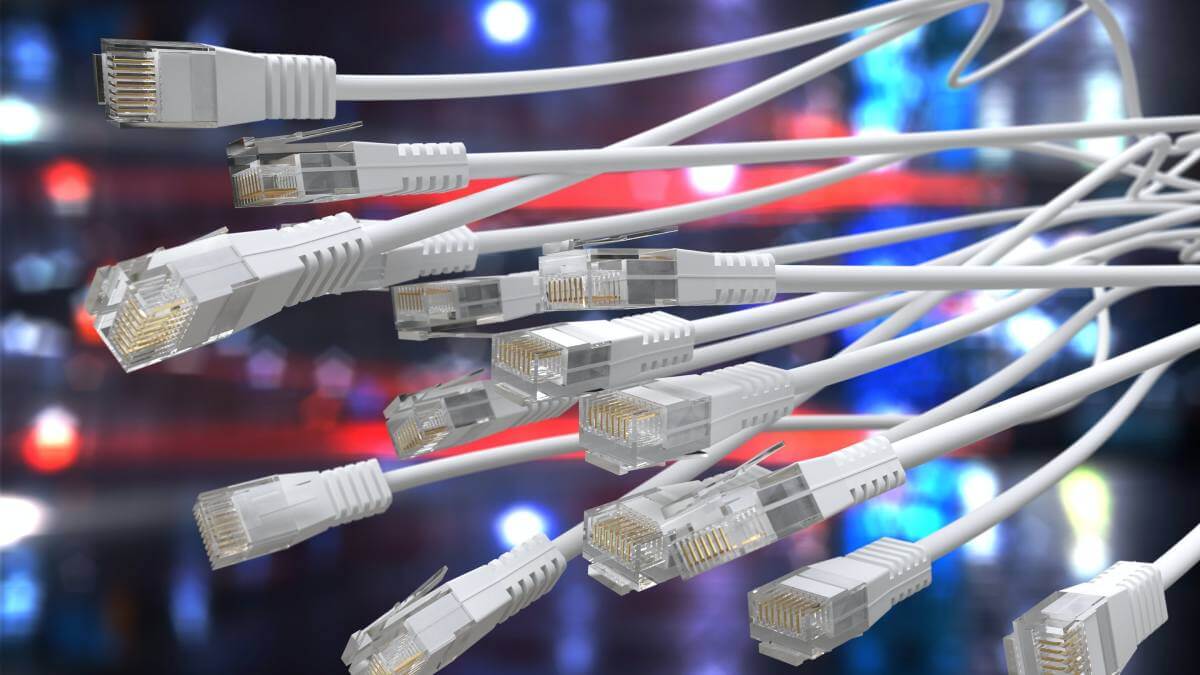Mastering Cable Management in WISP Tower Deployments
- by ISPadmin
- 2023 / 11 / 15
- Mapping
Introduction


In the dynamic landscape of Wireless Internet Service Provider (WISP) deployments, the success of delivering high-speed internet to remote areas often hinges on the meticulous management of cables. Towers play a crucial role in this infrastructure, acting as the backbone for connectivity. In this comprehensive blog post, we delve deeper into the best practices for handling power cables, Cat5/Cat6 cables, and fiber optics up a tower, and we explore the advantages of incorporating power squids for efficient and safe cable distribution.
1. Power Cable Management:
- Use of Conduit: Consider the installation of conduit for power cables. This protective measure shields cables from the harsh effects of weather, UV exposure, and potential damage from wildlife. Conduit also facilitates easier maintenance and replacement.
- Separation from Data Cables: The separation of power cables from data cables is not just a matter of organization but a fundamental requirement to mitigate electromagnetic interference. This practice ensures optimal signal integrity and prevents potential performance degradation in the WISP network.
- Grounding: Beyond powering the network equipment, proper grounding is a critical safety measure. Securely ground power cables both at the base and the top of the tower. Employ high-quality grounding equipment to establish a reliable electrical path to the ground, safeguarding both equipment and personnel.
- Remote Monitoring: Consider implementing remote monitoring systems for power cables. This allows for real-time tracking of power usage and can alert WISP operators to potential issues, enabling proactive maintenance and reducing downtime.
2. Cat5/Cat6 Cable Management:
- Proper Terminations: The importance of using high-quality connectors and ensuring precise termination for Cat5/Cat6 cables cannot be overstated. A well-terminated cable minimizes signal loss and interference, ensuring a stable and reliable network connection.
- Weatherproofing: As Cat5/Cat6 cables are exposed to the elements, employ weatherproofing solutions such as outdoor-rated Ethernet cables and cable glands. Proper weatherproofing is crucial for maintaining network performance and preventing downtime due to cable damage caused by environmental factors.
- Cable Bundling and Labeling: Neatly bundle Cat5/Cat6 cables using cable ties or Velcro straps. Proper labeling of cables facilitates easier troubleshooting and maintenance. This organized approach not only streamlines current operations but also sets the stage for future scalability.
- Tension Management: Address the issue of cable tension, which can arise due to wind or tower movement. Implement strain relief devices to prevent excessive tension on the cables, minimizing the risk of damage and signal loss.
3. Fiber Cable Management:
- Fiber Splicing and Connectors: Precision in fiber splicing and connector installation is paramount. Well-maintained fiber connections minimize signal loss, ensuring optimal network efficiency. Regular inspections and cleaning of connectors are essential for sustained performance.
- Cable Trays: Opt for cable trays to support and organize fiber cables. Installing these trays horizontally on the tower structure provides a secure pathway, minimizing the risk of damage from environmental elements and physical wear.
- Avoid Sharp Bends: Fiber cables are sensitive to sharp bends, which can lead to signal attenuation. Exercise caution during installation to avoid excessive bending or twisting, preserving the integrity of the fiber optic network.
- Redundancy Planning: Incorporate redundancy planning for critical fiber connections. Diverse routing and backup links can mitigate the impact of a single point of failure, enhancing the reliability of the WISP network.
4. Power Squids:
- What are Power Squids? Power squids, with their multiple branches providing several power outlets from a single source, serve as a versatile solution for tower deployments with numerous devices requiring power.
- Benefits of Power Squids:
i. Space Efficiency: Power squids consolidate multiple power outlets into a single, organized unit, reducing clutter and simplifying cable management.
ii. Flexibility: Multiple outlets offer flexibility in connecting various devices and equipment, adapting to the evolving needs of the WISP deployment.
iii. Safety Features: Many power squids come equipped with surge protection and overload features, enhancing the safety of connected devices and minimizing the risk of electrical damage. - Proper Installation and Weather Protection: When utilizing power squids, ensure they are securely mounted and protected from the elements. Proper installation not only prevents potential safety hazards but also extends the lifespan of the equipment, contributing to the overall reliability of the WISP infrastructure.
- Remote Power Management: Explore the potential of remote power management systems that complement the use of power squids. This allows for centralized control, monitoring, and troubleshooting of power distribution, enhancing overall operational efficiency.
Conclusion
In the ever-evolving landscape of WISP deployments, mastering cable management is pivotal for success. By adhering to these comprehensive best practices for power cables, Cat5/Cat6 cables, and fiber optics, WISPs can establish and maintain a reliable and efficient network. The incorporation of power squids adds an extra layer of organization and safety, addressing the unique challenges posed by tower deployments. As WISPs continue to bridge connectivity gaps, the implementation of these practices ensures a robust and future-ready infrastructure.
Contact us here to learn more about how ISP Revolution can help you deploy with confidence – the first time
RECENT BLOG
MORE INFO
ISP Resolution © 2023 All Rights Reserved
